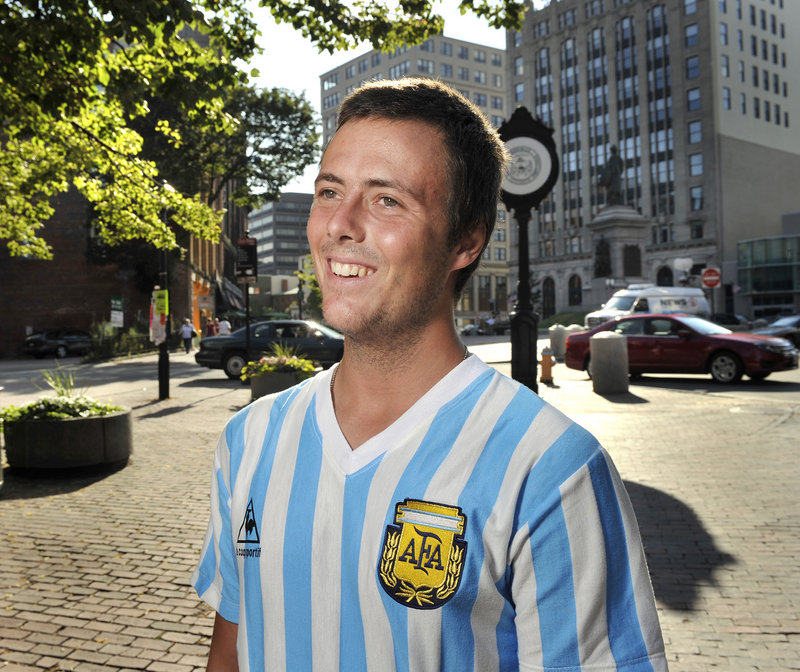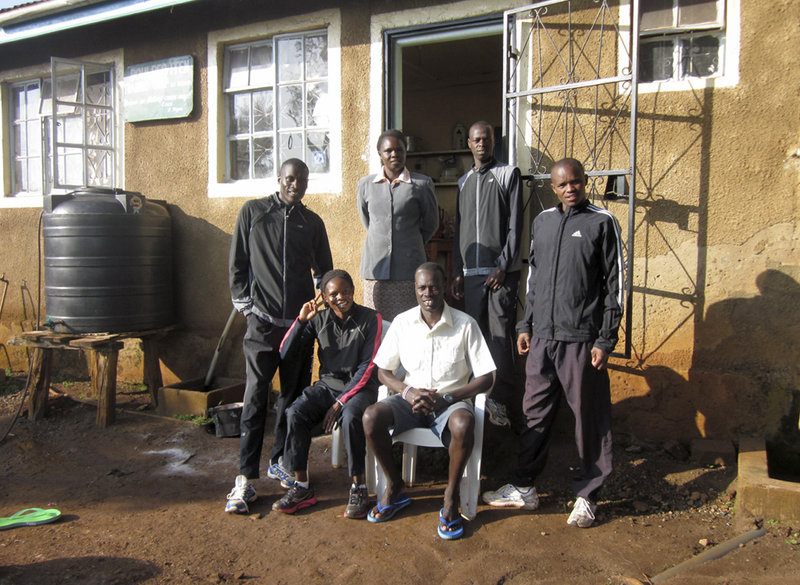“As the morning hours pass over cup after cup of chai, various farm animals and local athletes wander in and out of the compound to graze and greet the Kimbia crew. With all due respect, in Iten, world-class runners are almost as ordinary as sheep and goats.”
For most of his 21 years, Anders Samuelson has watched the great distance runners from Kenya come to Cape Elizabeth to win the TD Bank Beach to Beacon 10K road race. He marveled at how the Kenyans ran the roads to Fort Williams Park so effortlessly with impassive faces that rarely betrayed anxiety or pain.
Aside from the great Catherine Ndereba, a multiple Beach to Beacon winner who would visit with his mother, Olympic marathon champion Joan Benoit Samuelson, Anders never spent time getting to know the runners or their East African nation — until last winter and spring, when he took a break from Bowdoin College, where he runs on the cross-country and track teams, and headed to Kenya. For three months, Samuelson taught English to fifth-grade students at Silgich Hill Academy in Kenya’s Rift Valley.
For the next three months, he was taught a different life by the runners he trained with at the Kimbia House in Iten, a town overlooking the Rift Valley with a population of 4,000 — 1,000 of whom are there to train.
When he returned to the family home in Freeport last month, he brought a new awareness of Kenyan runners as people. Some believe Kenyans are superior because they’re genetically different. Samuelson can’t disagree more. The English major wrote about his experiences and observations.
“Even the athletes who have truly made it maintain the Spartan habits they developed as children growing up in highland poverty. They could use sit-down toilets but it’s harder to walk outside and use the Turkish toilet in the outhouse. They could pay for proper showers with hot water and showerheads but it’s harder to bathe from a bucket so that’s how it’s done. (They) could drive to the market to buy their mangoes and kale but it’s harder to walk, so they walk.
“It’s valid to note that no internationally successful Kenyan athlete comes from a running family. Virtually no Kenyan athlete wants his or her child to endure what they endured on their road to success.”
Wednesday, Samuelson sat on a bench in Portland’s Monument Square and described a typical day at Kimbia House that would be pure tedium for residents of developed countries. A long training run at dawn was followed by a breakfast of pieces from supa loaf, much like America’s Wonder Bread, and chai that was less tea and more milk and sugar.
Kenyans don’t talk when they run, said Samuelson. After breakfast, all they did was talk about their run, dissecting their form. More talk about the next day’s run. Talk about races in Europe and America. Talk until a lunch of rice and beans, and then a nap and more talk.
The runners had dreams of returning to Kenya with money won in races. Win one race and $10,000 and they could live out their lives in some comfort. Win more, and good things could be done for their community. Paul Koech, 1998 world half-marathon champion, built Silgich Hill Academy with his winnings.
The men around Samuelson were like monks at a monastery. Instead of serving God, they were serving their sport and a different hereafter.
“Running is their job,” said Samuelson. “It’s their future, and their families will give whatever they can to support them.”
“The notion of an elite training camp like the Kimbia House implies some state-of-the-art facility with a modern gym and an Olympic-sized swimming pool. In reality, the Kimbia House is a modest concrete building with three bedrooms, a tv/massage room, a small kitchen and an outhouse. In the front yard there is a small garden where the camp caretaker, Mama Kibet, grows kale, spinach, onions and managu, a traditional Kenyan vegetable.”
No basketball to shoot, no soccer ball to kick. No paddles or table for ping pong. No instruments for music. No video game consoles. And certainly no wireless signals.
“We had newspapers,” said Samuelson. “It didn’t matter how old they were. We talked about what we read. We had books.”
There was a television that picked up a signal or two. Mexican soap operas dubbed into English were watched after the sun went down. “I never thought I could watch them but when there’s nothing else, it’s amazing how you can get into them,” Samuelson said.
Mud and dung thatch-roofed huts, which Samuelson thought were from another time, in fact still exist, serving as homes. “I was surprised how cool they were inside,” he said.
He traveled the roads, sometimes paying to ride in aging Japanese-built vans called matatus that could seat 12.
He passed small roadside shacks that serve the same purpose as convenience stores in America. Some sold food, others bicycle parts. He watched children chasing after tires they had set rolling. It is believed that a child has a chance to become a world-class runner if he or she runs 10,000 miles by age 10.
This is a place that sends its runners around the world to race and win. Kimbia House will send three of its 10 athletes — Allan Kiprono, James Koskei and Julliah Tinega — to Saturday’s Beach to Beacon. Koskei won in 2002, Kiprono was runner-up last year. Tinega is racing here for the first time.
They are not just racers, Samuelson reminds once again. They are people shaped by their dreams and their environment. The same things that once described American runners.
The same things that described his mother, Joan, when she dominated the world’s roads.
Staff Writer Steve Solloway can be contacted at 791-6412 or at:
ssolloway@pressherald.com
Send questions/comments to the editors.




Comments are no longer available on this story